Turquoise lakes, waterfalls in North Cascades National Park
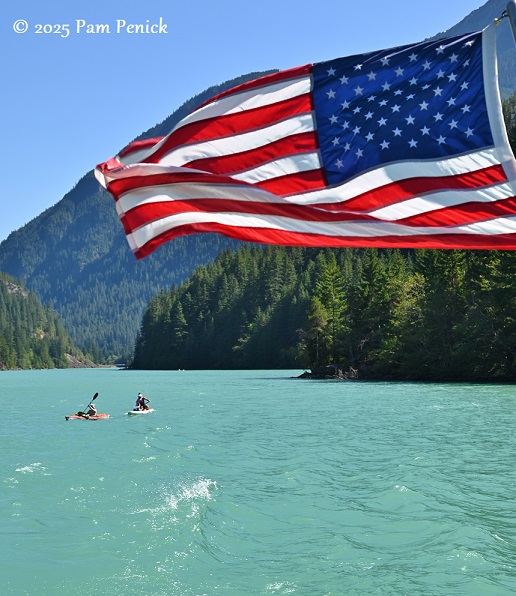
After two days last July at Olympic National Park, we drove back through Tacoma, headed north through Seattle, and kept cruising northeast. Just 20 miles from the Canadian border we entered North Cascades National Park, the only one of Washington’s three national parks we had never visited. Much less accessible via roads and trails than the other two parks, North Cascades feels remote. As the 2nd least-visited national park in the Lower 48 (after Michigan’s far-north Isle Royale), North Cascades is fairly uncongested in summer. However, because it’s mostly backcountry, visitors flock to the more accessible overlooks and trails, as we did.
Diablo Lake
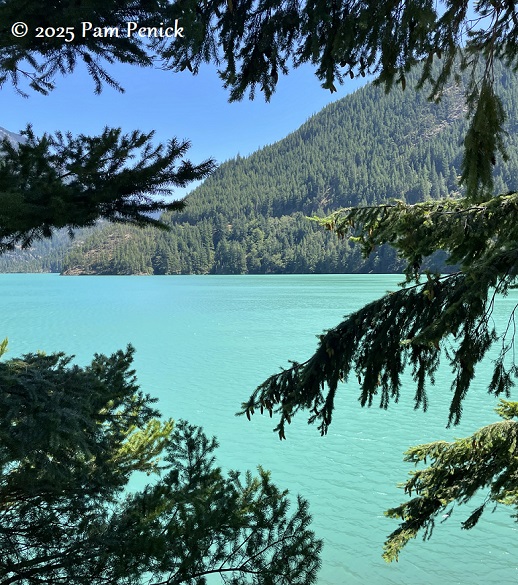
We spent two days exploring the park and Okanogan-Wenatchee National Forest via stops along the North Cascades Scenic Highway (Hwy. 20).
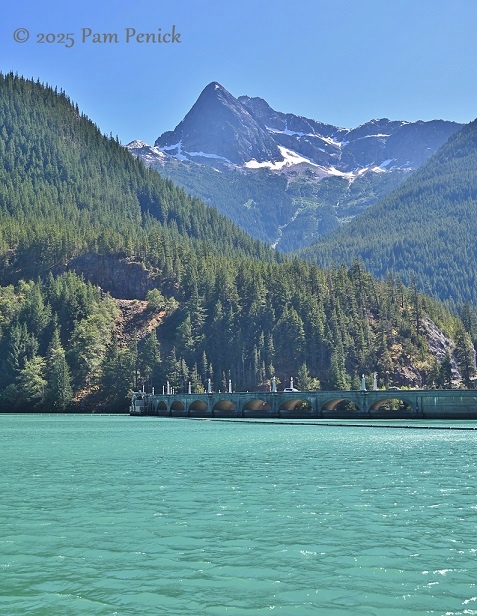
One afternoon we took a boat tour of glacier-fed Diablo Lake, whose milky turquoise color is caused by “glacial flour.” Glaciers slowly chew up mountain rock as they retreat, creating fine silt that snowmelt carries into the lake. The silt hangs in the water and refracts light to create this distinct aqua hue on sunny summer days.
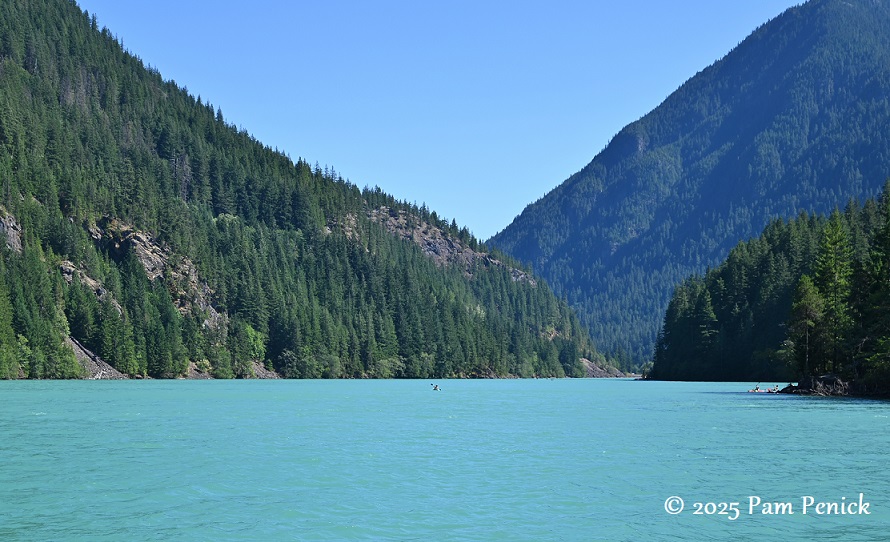
The bright blue color looks unreal, a robin’s egg in a nest of fir-lined mountains.
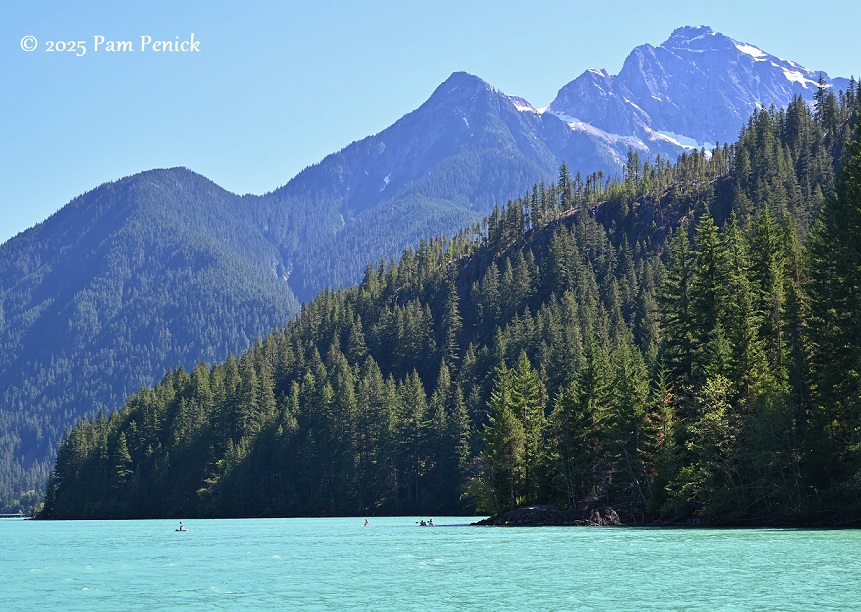
North Cascades boasts 300 glaciers, but they’re rapidly melting. According to the park service, “Geologic mapping data, old maps and airphotos, and a recent inventory indicate that glacier area has declined about 53% at North Cascades National Park…in the last century.”
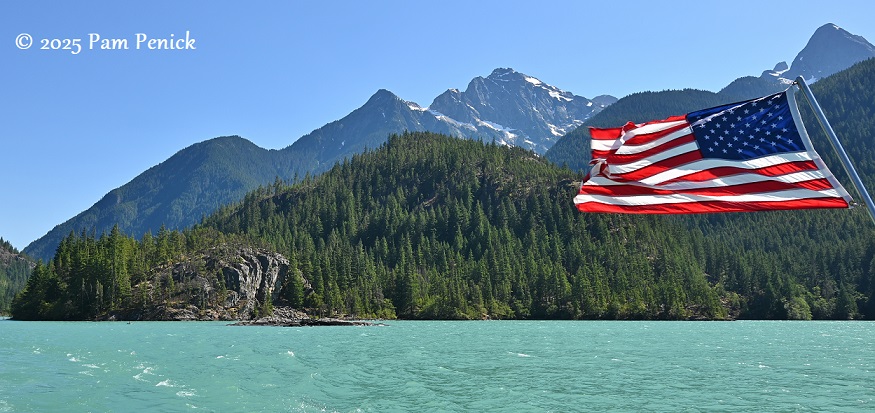
The 2-hour afternoon cruise with North Cascades Institute was pleasant on this warm July day. A cool mountain breeze whipped a flag on the boat and made me consider pulling on a jacket.
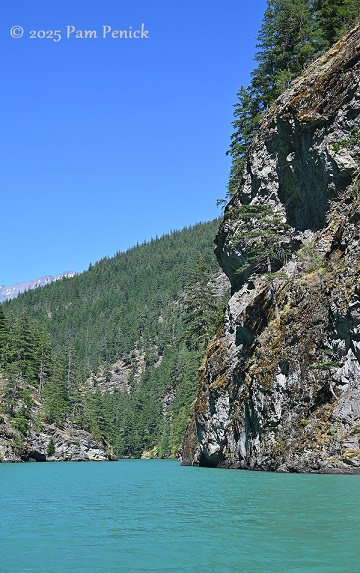
We sat outside at the back of the boat and watched the tour unfold in reverse.
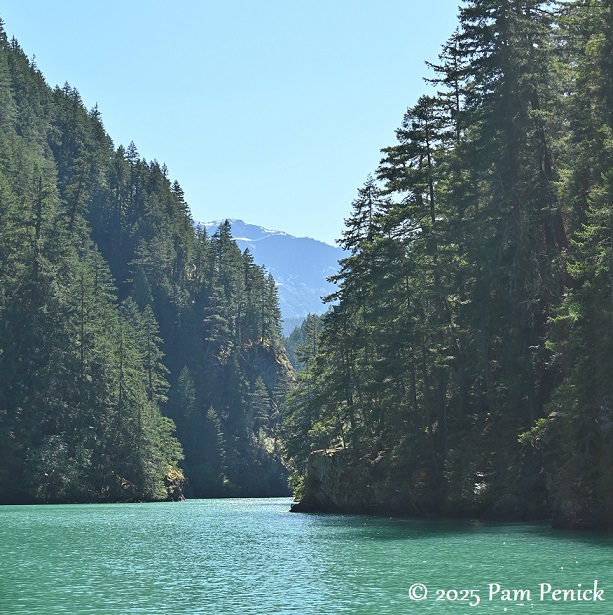
Diablo Lake is a dammed reservoir, part of the Skagit River Hydroelectric Project managed by Seattle City Light.
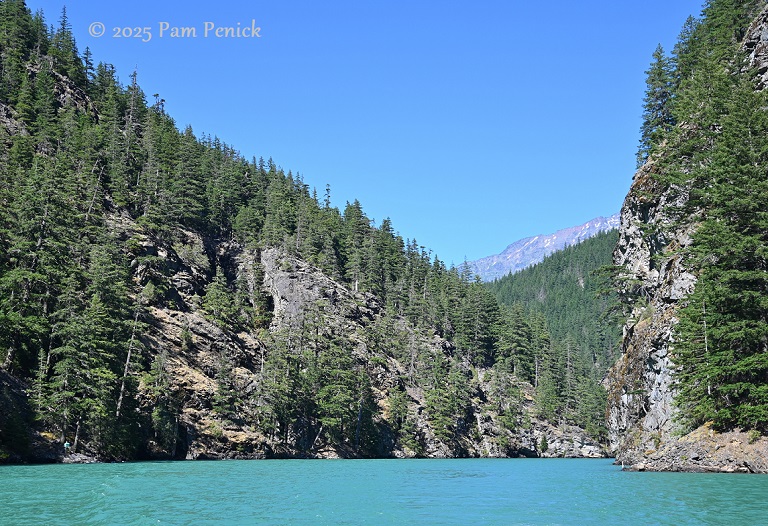
The Diablo Dam was finished in 1930, during the Great Depression, and helps keep the lights on in Seattle to this day.
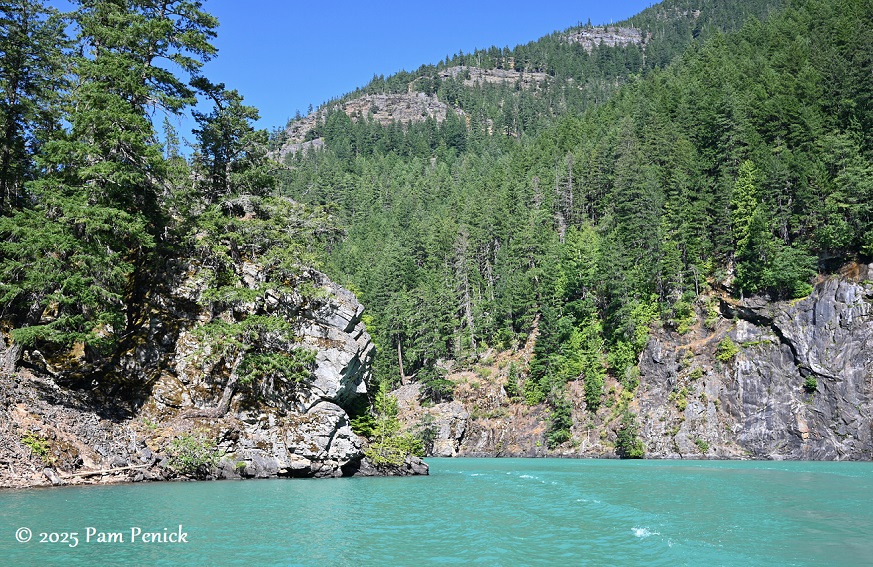
As a side note, the National Park Service last year announced plans to reintroduce grizzly bears to North Cascades. Read the Outside article linked here for info about how this will impact the park to the benefit of the natural ecosystem.
Rainy Lake
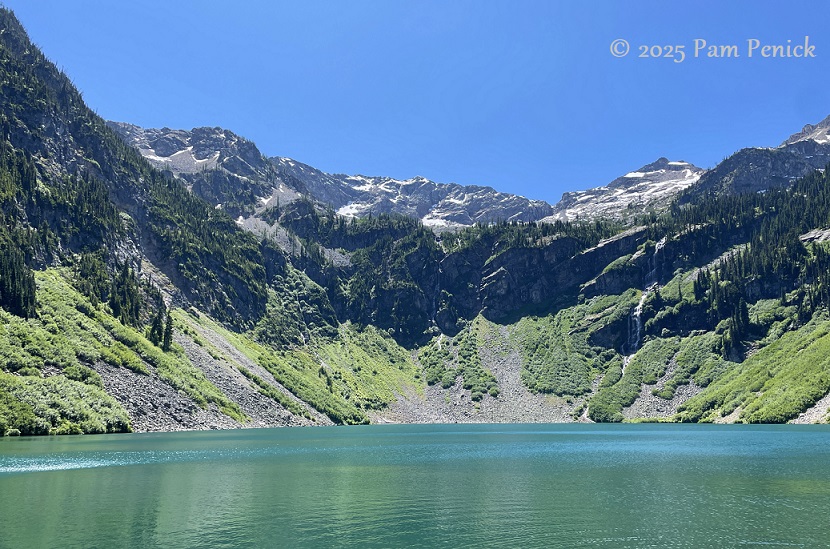
The next day we walked an easy trail to Rainy Lake, a picturesque glacial cirque carved by retreating ice. A waterfall of snowmelt sluices down the steep ridge on the right.
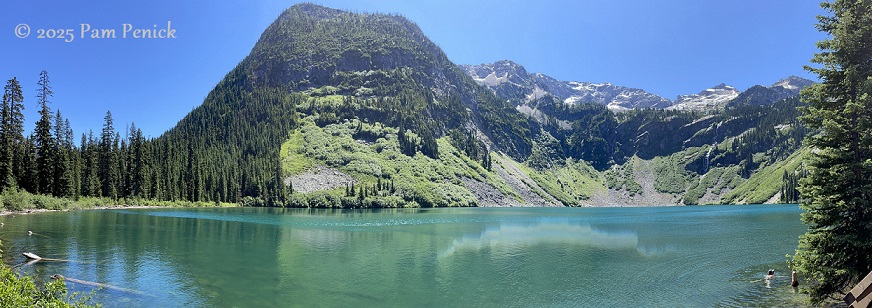
The Pacific Crest Trail (remember the book and movie Wild?) runs past Rainy Lake. Think of how cold this lake must be — and notice the swimmers at lower-right. It was a hot day, at least.
Washington Pass
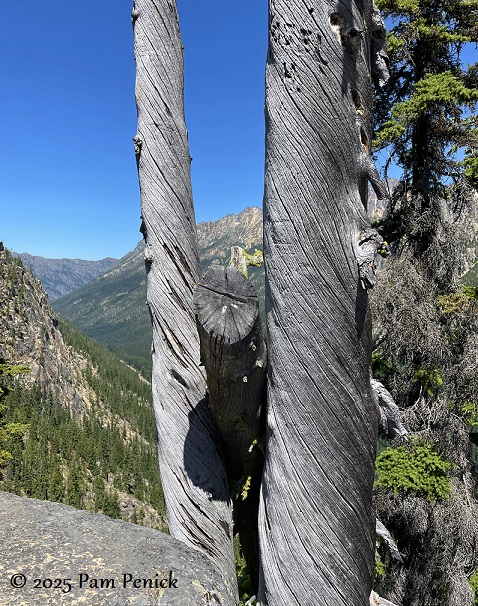
Washington Pass on the North Cascades Scenic Highway takes you through the mountains at an elevation of 5,477 feet. Trees twisted by the wind like candy canes cling stubbornly to rock.
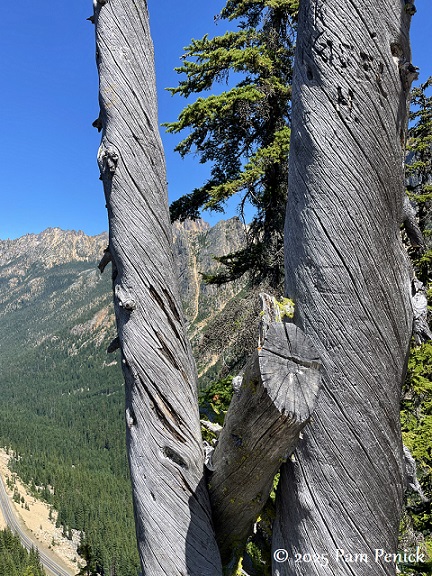
The road lies far below (lower-left).
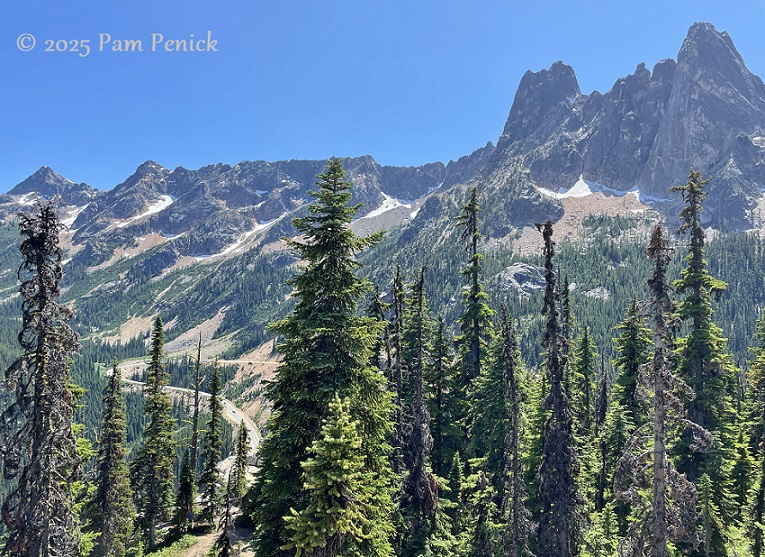
What a view of North Cascades’ serrated-teeth mountains!
Up next: Hunting for wildflowers at Mount Rainier National Park. For a look back at Olympic National Park, Cape Flattery, and La Push Beach, click here.
I welcome your comments. Please scroll to the end of this post to leave one. If you’re reading in an email, click here to visit Digging and find the comment box at the end of each post. And hey, did someone forward this email to you, and you want to subscribe? Click here to get Digging delivered directly to your inbox!
__________________________
Digging Deeper
Come learn about gardening and design at Garden Spark! I organize in-person talks by inspiring designers, landscape architects, authors, and gardeners a few times a year in Austin. These are limited-attendance events that sell out quickly, so join the Garden Spark email list to be notified in advance; simply click this link and ask to be added. Read all about the Season 8 lineup here!
All material © 2025 by Pam Penick for Digging. Unauthorized reproduction prohibited.


Given that I’ve spent so much of my life in cities, sometimes I forget how beautiful our country is. Thanks for the reminder, Pam.
Thanks, Kris. I love exploring our national parks and other sights along the way. There’s so much beauty to discover.
I’m enjoying reading your posts about Denver and now the Washington parks. I’ve not been to North Cascades before, and am awed by your photos. A new bucket list item! Thanks for taking us along.
My pleasure, Maggie. Thanks for letting me know you’ve enjoyed the travel posts!
Wow, looking at the blue, blue water and the deep green pines on this snowy day (when temps will drop into the low single digits as the week progresses) is a real tonic, Pam! Thanks! Beautiful country. I’ve never been to the Pacific Northwest.
What sort of low temps is Austin expecting this week?
We’re expecting a low of 20F on Wednesday morning. How about you?
Right around zero Tuesday/Wednesday. FMAO!! Fortunately we have snow cover, which is good for the garden beds in these temps.
The blue water is unreal. The twisty trees are my favorite shot, man that’s some wind!
It sure is. Bet it’s cold and windy right now!
I remember Gletscherwasser in Switzerland – but thanks for your explanation now. I can still see that unearthly colour!
I’ve never seen that, but the internet images of it are stunning.